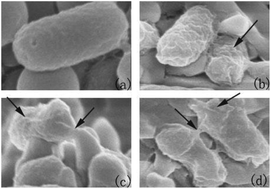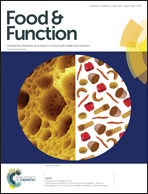Inhibitory effect of Zanthoxylum bungeanum essential oil (ZBEO) on Escherichia coli and intestinal dysfunction
Abstract
The inhibitory effects of Zanthoxylum bungeanum essential oil (ZBEO) on Escherichia coli (E. coli) in vitro and in vivo were investigated, as well as its function of improvement of intestinal health. The results of in vitro studies, such as minimal inhibitory concentration (MIC) analysis, agar disc diffusion test and growth curve analysis of E. coli, showed that ZBEO had an excellent inhibitory effect on the growth of E. coli, which may be related to the loss of the normal shape of the cell membranes and the leakage of intracellular constituents, on the basis of SEM observation and cell constituents’ release assay. ZBEO also had an inhibitory effect on enteritis and intestinal dysfunction induced by infection of E. coli in vivo, and histopathological observation indicated that ZBEO could markedly ameliorate the structural destruction of intestinal tissues, which might be related to its inhibitory effect on the gene expression of inflammatory cytokines (TLR2, TLR4, TNFα and IL-8). In conclusion, ZBEO showed an excellent inhibitory effect on E. coli both in vitro and in vivo, suggesting the potential application of ZBEO as a kind of functional component having the effects of improving intestinal function and health.



 Please wait while we load your content...
Please wait while we load your content...